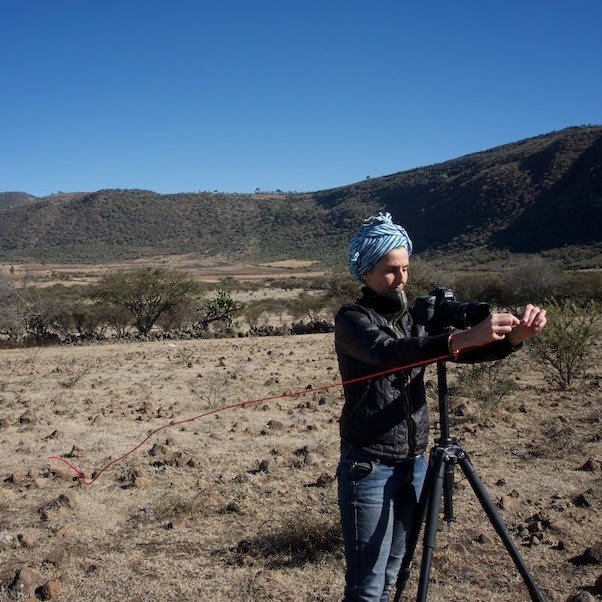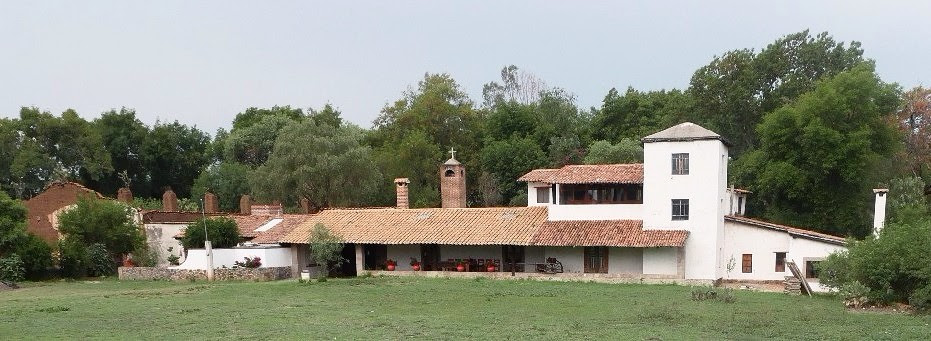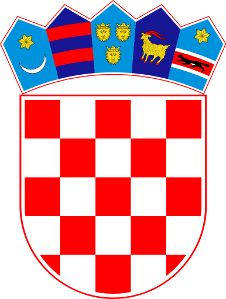By Amy Brady
I am thrilled to bring you this month an interview with climate justice essayists and podcast hosts Mary Annaïse Heglar and Amy Westervelt. With their podcast, Hot Take, both writers/hosts are approaching climate change in a way that so many artists and novelists do: through emotional, heartfelt storytelling. The podcast examines trends in climate storytelling across mediums, and future episodes will possibly feature novelists, poets, and other creatives. The podcast launched late last year but has already made waves among writers and media types. In this interview, we discuss what inspired the podcast and why allowing emotional responses to the climate crisis into the public arena is just as important as making space for scientific research.
What inspired you both to start the Hot Take podcast?
Mary: Amy approached me about a podcast a couple of times. First, the idea was to develop a podcast on my own, which felt a bit overwhelming, but I did throw around ideas about climate messaging and intersectionality. A little later, she mentioned that she was going to start a podcast on climate news, and wondered if I would be a co-host. Then, the wheels got to turning about combining that with the ideas we had for the solo show. That turned into ideas for a media criticism show and as the concept developed, we grew more and more excited and were asking ourselves, “omg, how has no one thought of this before?â€
Amy: Yes, exactly! The idea sounded sort of narrow at first, but the more we talked about it, the more we realized we had a lot to say on the subject and a lot we wanted to explore, and we felt like a lot of people wanted to talk more about climate storytelling but there was no place to really do that.
Your first few episodes are dedicated to reviewing the last four years’ worth of climate coverage. What major trends have you seen in journalistic storytelling? Did any of them surprise you?
Mary: [Climate storytelling] got so much more emotional. I think for a really long time, the climate conversation had been wedded to the idea of a very strict set of best practices: you must be hopeful, you have to emphasize individual actions, “we†are responsible for this. All of that got thrown out of the window in the past couple of years. Sure, there are still messages of hope, but there’s also fear and anger and sadness. In other words, there’s more honesty. The conversation had been largely democratized. It used to be that you had to have a certain level of access to know how bad our situation is, but now everyone knows. I don’t know if I’m surprised by [these increases in emotional responses and accessibility] so much as I am simply delighted.
Amy: We recently finished working on the 2019 episode, the last of the recap episodes, and were bowled over by how, for the 2016-2017 episode, we had to really hunt for stories, but by 2019 we had more than we could feasibly include. So just in terms of quantity there’s been an explosion in climate coverage, which is great to see. It’s also gotten so much more diverse both in terms of who gets to write about climate and what counts as a climate story. I don’t remember reading many, if any, personal essays on climate five years ago, for example – climate storytelling was often confined to either policy stories or science stories. Now the media is starting to deliver on the idea of climate as a lens and not a distinct issue (which coincidentally is how I think we need to approach acting on climate: holistically, systemically, and not just tackling the energy source!)
This newsletter is dedicated to art and literature, but journalism is also a kind of storytelling – a vital one that largely shapes how we discuss the climate crisis. Any predictions for how the climate narrative will unfold in 2020?
Mary: We also plan to weave in more fiction as we continue, and I’d say that most personal essays are literary, and those have exploded on the climate scene in recent years. I think we’re going to begin to see way more of that. I also think we’re going to see more usage of different mediums. For one thing, there’s a lot of room for more podcasts and a desperate need for more climate storytelling in video format. I think the tone is going to continue to get bolder and stronger. The climate movement is done with being polite. They’re ready to go to the mattresses.
Amy: I predict we’ll see more and more narrative approaches on climate. Drilled, the other climate podcast I do, is still one of the only narrative podcasts on climate, which seems nuts to me given how many climate stories are unfolding all the time. Given Hollywood’s growing interest in climate and the desire for character-driven narratives there, I think we’re bound to see more of those sorts of stories. I am also thrilled to start seeing the first inklings of humor and satire being used effectively on climate, and I suspect (hope!) we’ll see more of that, too. Sarah Miller’s piece in Popula, about Miami real estate and sea-level rise, is a great example. So is Katy Lederer’s piece on the COP climate negotiations in n+1.
A subject that comes up often on your podcast – and in both of your writing – is the validity of intense emotional reactions to climate change. Why is allowing for an emotion response – as opposed to a purely rational and scientific one – important?
Mary: Because the scientific one hasn’t worked! If we had rational leaders in place who wanted to solve the problem, then sure, all we need to do is present them with the evidence and go on our merry way. But, that’s not where we’re at. This isn’t a war on “facts.†This is a war on “power.†And power doesn’t surrender to simple “facts.†It never has. If it did, it would never have existed. To challenge power, you have to make noise, and to make noise you have to feel something. But also because I don’t want to be the one who watches my world slip away with cool detachment. I’ve seen people get furious about missing a green light or a subway train and then laugh off Camp Fire or Hurricane Maria as “well, what are you gonna do?†I don’t want to be that person.
Amy: Because climate change is a trauma inflicted on humanity by a few humans. And you cannot process a trauma and get to action without experiencing and confronting a whole range of emotions: grief, anger, shame, guilt, sometimes all at once. And because we can’t accept others’ emotions if we don’t accept and process our own. I think that work is really critical to moving past the various blockers to climate action.
What voices and stories would you like to see more of in the climate conversation?
Mary: I want way more people of color and women. To get real specific, I want to hear from more Indigenous women. Their experience is critical, and when they speak, I want everyone to listen. The same goes for the disabled community. I’ve learned so much from voices from that community over the past year and it’s been really instructive.
Amy: Dammit, the exact same! Indigenous women, disabled people, and I’d also like to hear more from Latinx writers, particularly from those who are connecting the dots between climate change, eco-fascism, and immigration.
What do you have planned next for Hot Take?
Mary: Ha, I think that’s hard to say since we just got started! But already in 2020, we’re going to start taking listener’s questions and inviting guests onto the show, with priority given to climate storytellers. We feel like there’s already a lot of spaces for experts like scientists and policy analysts to talk about their craft vis-a-vis climate, but precious few of them for climate storytellers. I’m really excited to get those conversations going. I think they’re going to be cathartic.
Amy: Yes! There’s an element to the show that I don’t know if we totally planned for, and that is the therapeutic catharsis stuff. Talking through our own emotional responses to the problem, looking at all the different ways the story has been told, it’s kinda the thing that we both say about the need for emotion in this space. Looking at it from a variety of angles actually really helps to process and get to a place where action is possible. We hope to do that for other climate storytellers, and our listeners, too.
Any other projects you’d like my readers to know about?
Mary: Not so much for me. Amy?
Amy: I do! Drilled season three is launching January 21st, and we’ll also be launching a new climate accountability reporting project that same day, which will include a website for both reporting and essays, two newsletters (we’re sponsoring Climate Liability News and Heated), and a handful of audio projects, too. We’ll be working with various partners to collaborate and amplify as well, including HuffPost, New York Magazine, and some others I can’t talk about yet. When I say “climate accountability,†I mean we’ll be digging into all the various reasons for delayed action on climate. So the role of the fossil-fuel, automotive, and manufacturing industries for sure, but also less obvious things like how the language we use impacts action, how different messaging frameworks have or haven’t worked, why the IPCC kept social scientists out of their process for so long, really trying to examine all the big blockers.
This article is part of the Climate Art Interviews series. It was originally published in Amy Brady’s “Burning Worlds†newsletter. Subscribe to get Amy’s newsletter delivered straight to your inbox.
Amy Brady is the Deputy Publisher of Guernica magazine and Senior Editor of the Chicago Review of Books. Her writing about art, culture, and climate has appeared in the Village Voice, the Los Angeles Times, Pacific Standard, the New Republic, and other places. She is also the editor of the monthly newsletter “Burning Worlds,†which explores how artists and writers are thinking about climate change. She holds a PHD in English and is the recipient of a CLIR/Mellon Library of Congress Fellowship. Read more of her work at AmyBradyWrites.com at and follow her on Twitter at @ingredient_x.
———-
Artists and Climate Change is a blog that tracks artistic responses from all disciplines to the problem of climate change. It is both a study about what is being done, and a resource for anyone interested in the subject. Art has the power to reframe the conversation about our environmental crisis so it is inclusive, constructive, and conducive to action. Art can, and should, shape our values and behavior so we are better equipped to face the formidable challenge in front of us.
Go to the Artists and Climate Change Blog
Powered by WPeMatico

























